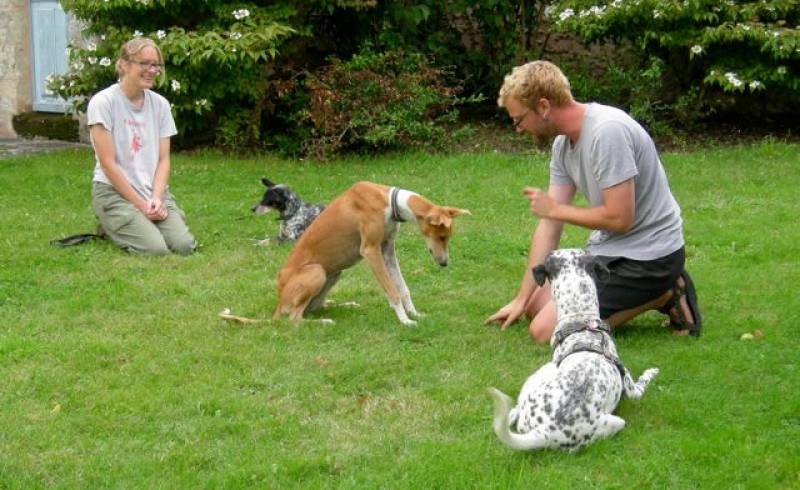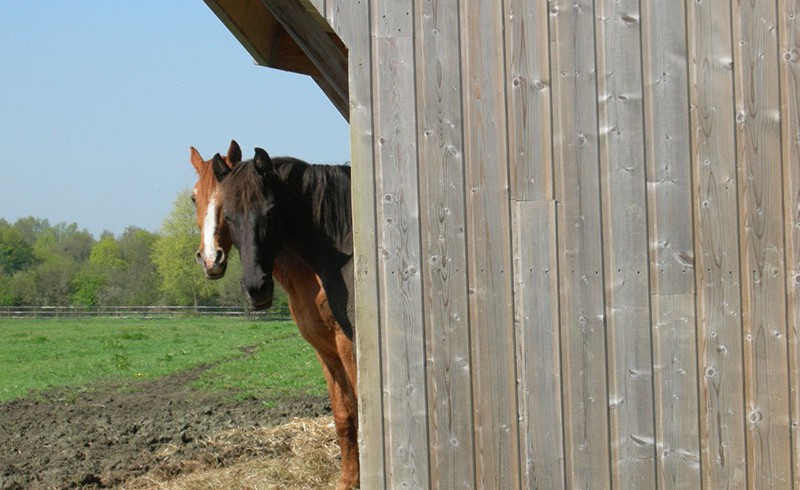Annual Report 2011
(Excerpt: For the complete report please write to Epona-Stiftung für Pferd und Umwelt c/o Mermagen, Kesselstr. 15, 53797 Lohmar)

Contacts, public relations and local exhibitions
As in the previous years the year 2011 was initially characterized by the effort to bring the goals of the Epona Foundation for horse and environment close to as many people as possible for the first time, to socialize and to improve the public image of the foundation. The foundation, which can be found at www.epona-foundation.org, was expanded to include a French version. In March Marlies Kamps visited the Horse Fair “Equitana” in Essen/Germany, learned about new treatments and training methods, discussed with Cavallo’s chief editor Christine Felsinger a possible report on the subject “Horses help people” Furthermore she met the director of the Linda Tellington Jones project near Münster and the stud farm manager Mario Lampe, who is a favourable of the Epona Foundation since its beginnings. Marlies Kamps toured Germany, France, Spain and Morocco, gave several talks at smaller private events and conducted a number of discussions about concerns and work of the foundation.
In April, we discussed with French television journalists on the use of horses in youth work, especially in the difficult adolescent care. In addition to about 50 other exhibitors, we built our horse cart on the organic market in La Perriere in May, showed large photos of our horses and complementing texts. Of particular interest were the Berber horses from Morocco, where they came from, how they were shipped to Europe, why they had been treated badly, if they were old or sick, etc. We were particularly pleased with the invitation of the municipality Pervenchères, where the foundation horses are sheltered at the stud farm Haras des Chênes, to participate in the major regional agriculture exhibition “Comice Agricole Cantonal” in July. We participated in the preparatory municipal meetings, assumed smaller organization tasks and presented Brill, a veteran trotter, at the exhibition. In front of the sulky he showed how he used to run. At easy trot, he sprinted with his driver Jenny around the lake of Pervenchères. Surly it was big fun for the old racing horse to be the center of attention once again. Of course we had previously tested whether the sulky caused stress to Brill. The opposite was the case. Then we showed to the interested spectators how we keep Brill fit with gymnastic exercises in hand and under the saddle. After the presentation, many visitors came to the foundation’s stand, looking at the photos, finding out about the foundation’s work and often asking questions about problems they had with their own horses. In the evening, nearly 200 brochures were distributed and many addresses of interested parties were noted down.
La Chevrie
On the spacious grounds of the farm La Chevrie, which are ideal for horses, we were already able in 2009 to shelter our first foundation horse Kosmos, a retired older thoroughbred gelding that came as a gift to our care. Mediated by the Epona Trust in Haye-Pesuel, in 2010 we adopted Kham, an old blind horse from Alençon, and his companion, the 22-year-old Calin, a French trotter with strong osteoarthritis. We concluded with the stud farm Haras des Chênes a contractual agreement that provides us with up to 10 places for the accommodation of the foundation’s horses, ponies and donkeys.
In March 2011, we received another call for help from the Epona at Trust Haye-Pesuel. As a result, we took Fanny and Tschykas. Fanny, a chestnut pony mare in her 30’s, has a hip injury and summer eczema. Her tail and her mane were in a poor state and her skin was full of scabs and abrasions. She is a jolly little mare and when it comes down to it, she can be very quick. Tschykas has almost reached the 30; she is a small, dainty thoroughbred mare, covered in scars and full of osteoarthritis. She is more reserved and a little shy. On the first morning, the two got thoroughly cleaned, massaged and the tortured skin was treated. Then they went to the pasture. They threw themselves on the grass and hardly raised their heads for hours. After a short settling in we put Tschykas to Kosmos, who needed a new companion. Fanny went to Kham, the small blind and they also became friends quickly.


Purchase in Morocco
In 2010, we had discussed to buy one or two neglected Berber horses that lived on the Moroccan Atlantic coast in a herd of about 20 animals. All animals had owners, who often did not care for their animals for years. Martine provided the animals with straw and water, administered deworming. If the owners needed money or workhorse, they came and took their horse to either sell it on the market or to put it before the cart. The animals which came back mostly looked pathetic, often completely emaciated. We decided to make the attempt. In May 2011, we acquired the mare Indu and her foal Aloha. We agreed to transfer the horses from Morocco to Europe, first to Spain. This was planned for the autumn, when it is not too hot for a transport and relocation comes naturally to the animals. Marlies Kamps flew in early November to Andalusia, organized the accommodation, transport and travel arrangements (blood samples, chips, papers, quarantine, training, etc.). But first, the transfer failed of bureaucratic hurdles, the Moroccan authorities did not allow an exit. We could not do anything, except to hope for a solution in 2012.
Welcome support
At the end of August an old mobile home arrived at the farm. Petra and Sascha had asked if they could help us for a few weeks. With them they brought four ferrets and their dog Lunes. Petra is a qualified horse trainer and had written her thesis on therapeutic riding. Sascha is a social worker. The two love animals and visited animal welfare projects on their trip through Europe. They stayed for half a year with our horses and were a great help.


Outlook
In 2012, the transfer of both Moroccan horses to Spain succeeded. The work with the foundation’s horses on the farm “La Chevrie” continues. The costs for care and accommodation remain manageable; like the costs of promotion and management they could be financed with the benefits of the endowment and donations. Our current resources were not sufficient for further projects. We will have to raise more donations.